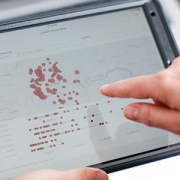Make Informed Business Decisions with Data-Driven Marketing
In the uncertain times that have become our daily lives, it is more important now than ever to be smart about how best to communicate with your customers. Using Customer Insights effectively can provide a great value to marketers when activated through marketing and sales efforts to get the sales needle moving in the right direction. “Smart customer data” has emerged as a powerful strategic asset for the most successful marketing professionals. The process of using this data to help define goals, audiences, campaigns, and tactics-as well as measuring and analyzing performance- makes marketers much more agile and responsive to rapidly changing consumer expectations and behaviors. If you recognize the need to accelerate your marketing with a more data-driven, analytical approach, we recommend getting started with some of these ideas:
Assess when and how your customers want communication
- Give customers the opportunity to share their communications preferences with you by making it easy to do so on your privacy pages and in every reply form.
- Once they tell you their preferences, make sure you respond and respect their choices in your campaigns.
- Use message testing over multiple channels to build your understanding of what makes your customers tick and what types of messaging they respond to.
- Keep track of what worked and optimize results. The satisfaction of your customers could grow.
Use insights to drive your content strategy
- Different segments of your audiences will be interested in different types of content. Use insights about your segments in content development.
- Determine the types of marketing content and delivery formats your key segments crave and respond to the most.
- When developing different content, consider where customers are in the sales cycle. Are they gathering information and researching the category? Consider providing an overview of where you stand vs. your competition.
Master data-driven cross-selling
- Build a cross-sell matrix and keep track of the most likely next-to-buy products for your customers.
- Analyze the typical time between purchases, and make sure you trigger a cross- sell offer around the time your customers will be going back into the market.
Note: this cross-sell matrix should be based on real data and not just experience or a gut feeling.
Use customer data for digital micro-targeting
- Use digital ad buying platforms to deliver ads directly to your individual customers with segment specific messages.
- Push your current customer data into the platforms. They can build predictive models on the fly to find lookalikes.
- Deploy digital ads to the same group of people just before and just after direct mail contact to see if you can boost your direct mail results based on your call to action.
- Work with your media buying team to pilot some of these innovative 1:1 digital techniques and find out where you get the biggest bang return on investment.
Test offer-optimization
- Create offers with just enough incentive to get your customers and prospects to act.
- In addition to monetary offers, create offers that provide information or interesting content. Too many monetary offers can backfire and train your customers to wait for the best deal.
- Use a test and learn approach to get the most response from your product and service offering.
Whether your aim is to fine-tune marketing targeting by selecting audiences that will deliver the greatest return, to deliver more relevant messaging, or to find the customers that are ready to leave (or those that are ready to buy) – the answers are often found in your existing customer data. Analyzing data from inside your organization will build customer insights that can improve your marketing performance.











